Yerevan, Armenia
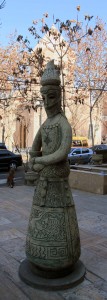
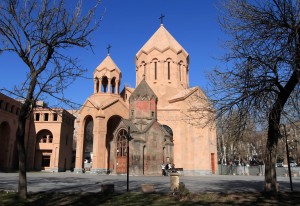
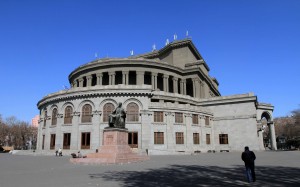
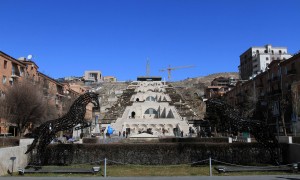
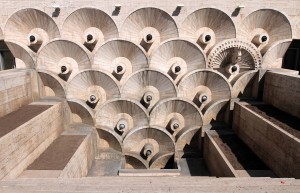
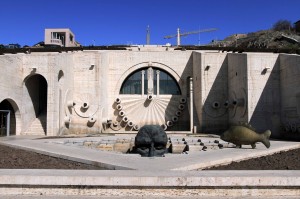
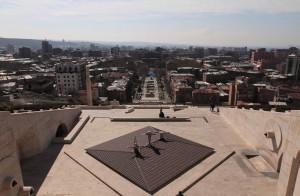
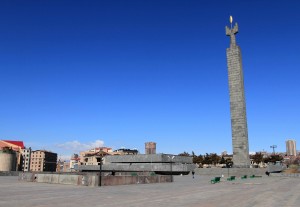
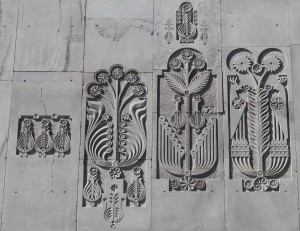
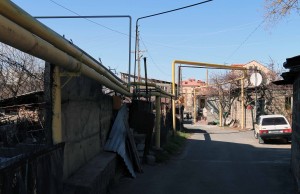
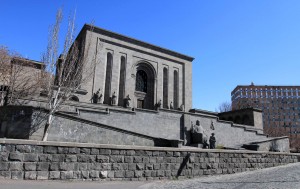
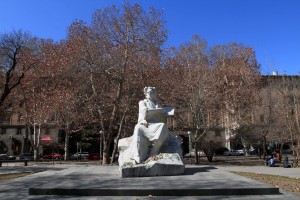
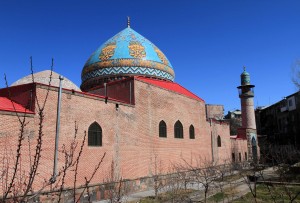
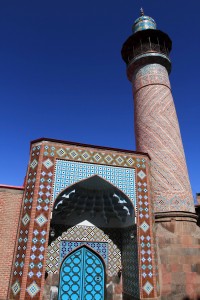
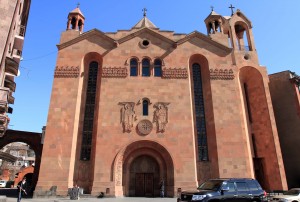
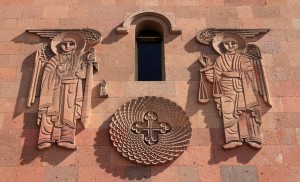
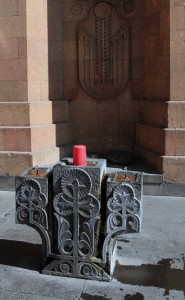
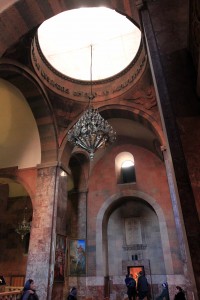
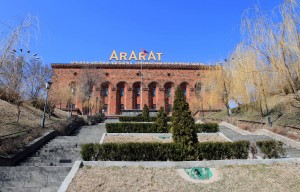
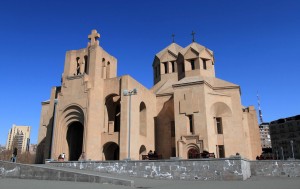
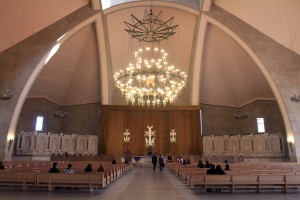
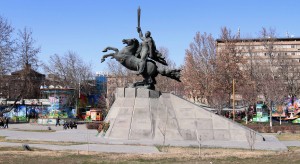
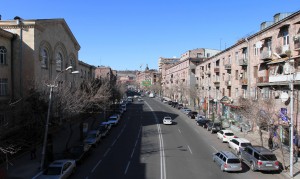
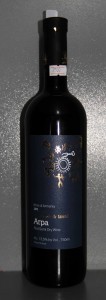
I woke up today at 08:50, got out of bed, got ready, plugged in my phone to charge it, and then took it easy for the next two hours as my phone charged, using it as an excuse for delaying my site seeing today. Finally, at 11:00, I exited the hostel and walked down Abovyan Street to the Holy Mother of God Katoghike Church, a small medieval church that was built during the thirteenth-century AD; I reached the church after walking for a short time (luckily, downtown Yerevan isn’t too large and spread out) and viewed the inside of the small structure; next to the Holy Mother of God Katoghike Church is a much larger church, the St. Anna Church, which was recently constructed (commenced in 2009 AD and – after looking through the windows – nearly completed). After viewing the church, I walked to Freedom Square and walked around the Yerevan Opera Theater (it was opened in 1933 AD and has a statue of Aram Khachaturian, Armenia’s most renowned resident composer) before continuing on to the Yerevan Cascade. The Cascade is a giant stairway that links downtown Kentron area of Yerevan to the monument parks above the city; construction began in 1971 AD and the first phase was completed in 1980 AD (further development was completed in the 2000s); the Cascade has many sculptures on display in the park in front of it, as well as on it and inside it – underneath the exterior steps, there are escalators taking visitors up and down the massive monument, as well as exhibition rooms, and there are more sculptures and art on display inside which comprise the Cafesjian Museum of Art (unfortunately, most of it is post-post-post-modern and of little interest to me . . . I can grab a bunch of scrap metal, weld it together, paint it eccentric colors, string some LED lights around it, and claim it represents man’s frustration with materialism too . . . okay, some of the exhibited artwork was well done, but a lot of it was garbage). I walked up all of the steps on the outside of the Cascade and then up to the Fiftieth Anniversary of Soviet Armenia Movement Monument, where I had a nice view of Yerevan and Mount Ararat in the distance. I then walked back down to the Cascade, entered inside, and viewed a portion of the artwork on display along the escalator route. I then emerged back out in to the sunlight and walked to the Mesrop Mashtots Institute of Ancient Manuscripts (commonly referred to as the Matenadaran), which was not too far east of the Cascade. Unfortunately, it being Monday, the manuscript museum was closed; so, after viewing the outside (I do kind of like the Soviet-style of building and sculptures, with their idealized view of man and industry), I walked back to Freedom Square and then walked south-westerly to the Blue Mosque (located near Prospect Mall – a building with an interesting façade), a unique looking mosque (with local and Iranian stylistic influences) that was built in the eighteenth-century AD; in 1931 AD, religious services were stopped under the Atheistic Soviet regime and it was turned in to the Museum of the City of Yerevan; in the 1990s, after the Soviet Union collapsed and Armenia gained its independence, the mosque resumed its Islamic functions; unfortunately, I arrived at the mosque at 13:20 and it would not open again for visitors until 15:00; so I walked on to my next stop instead of waiting around. I continued on to the nearby St. Sarkis Cathedral, the seat of the Araratian Patriarchal Diocese, located on the left bank of the Hrazdan River; the present-day St. Sarkis Cathedral (there was originally a church here that was destroyed by the earthquake of 1679 AD) dates back to 1835-1842 AD. Next, I walked across the Haghtanak “Victory” Bridge, over the Hrazdan River, to the Ararat Cognac Factory (or “Yerevan Brandy Company”); my intention was to tour the inside and taste some of their fine and world-renowned cognac; however, the next tour would not be until 18:30; I decided not to wait around or come back here later today for the tour (the factory is on the other side of town); so, I walked back toward the center of Yerevan, passing by more monumental statues, government buildings from the Soviet-era, and Republic Square. I then walked to the St. Gregory the Illuminator Cathedral, which was built in 2001 AD to commemorate the 1700th anniversary of the proclamation of Christianity as a state religion in Armenia; it is the largest Armenian church in the world and the inside was impressive even if rather stark. After visiting the cathedral, I walked back toward the hostel, stopping at a market store to buy some meat, cheese, chocolate, wine, and beer (the bare necessities). Also, it is worth noting two unique characteristics (at least, unique from my experience) about Yerevan: first, many buildings have gravestone type markers on the outside walls, memorials to the deceased, whom I’m assuming had some connection to the building where their stone memorial is now located; second, there were a number of continuously flowing drinking fountains, fed by springs throughout the city, making it clear that there is no water shortage in Yerevan. I then returned to the hostel at 15:30, and had a snack of salami, cheese, and beer. I wanted to use the sauna at the hostel, but the staff told me it would take two hours to heat it up (what the f-); so I decided to work on the website and type out journal entries instead of relaxing. I worked late in to the night and after 23:00, I opened the bottle of wine I had purchased earlier; it was a semi-dry red wine, produced from Areni Noir and Tozot grapes; unfortunately, there was a slight fizz to the wine and it was obvious that it had undergone a secondary fermentation while sealed inside the bottle; this made it taste strongly of alcohol and it also tasted of raisins and cherries; overall, the wine was not very good (actually, all the Armenian wine I’ve had thus far has not been very tasty to my palate; I actually prefer Georgian wine which seems absurd since the countries are right next to each other in the same region – maybe it’s a cultural thing, the way they produce and like their wine). After getting up-to-date on all my journal entries, I then went to sleep after 02:00.
